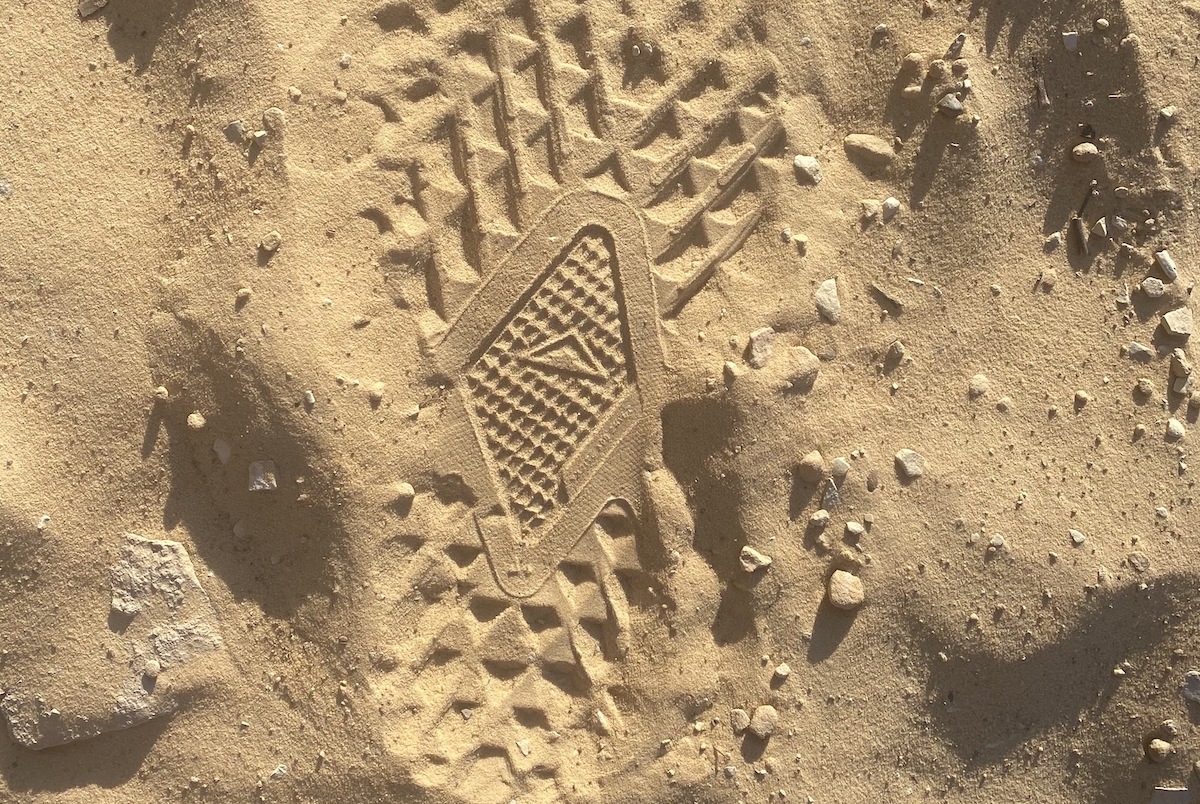 [Author’s Note: This is part one in an occasional series on longevity concepts in endurance running. In this series, we discuss factors that play into our capability and enjoyment of the sport as we progress in both experience and age. Be sure to check out part two and part three also.]
[Author’s Note: This is part one in an occasional series on longevity concepts in endurance running. In this series, we discuss factors that play into our capability and enjoyment of the sport as we progress in both experience and age. Be sure to check out part two and part three also.]
Okay, okay, no runner wants to quit running! Almost all of us have dreams of running freely into the proverbial sunset of life. But the fact is that almost all of us will end up quitting our beloved sport much sooner than we want to.
I almost quit running recently. The natural aging process, the progressive effects of 20-plus years of high-volume and high-intensity running, and some unfortunate disasters like a giardia infection, factored into years of struggle that made my running slower, stiffer, and substantially less enjoyable. Late last summer, my runs were so stiff and uncomfortable that running felt terrible. I wanted to quit.
Quitting running — whether outright or a dramatic drawdown of training and racing — may seem extreme, but doing so is far more common than many realize. Formal running retirements are quite rare. Instead, many of us “go quietly into that good night,” as Dylan Thomas did not want us to do.
That weekly 10-mile group run plus post-run beer slowly degrades into five miles and three beers. We race less, run less, and finally stop running entirely. Very simply, running starts to feel bad, so many of us fade into that good night, whether we want to or not.
I didn’t quit. Instead, I started addressing the root causes of my terrible-feeling runs, and my running has finally turned the corner. I feel better, stronger, and more motivated. Some days, I actually feel good!
This article is meant to identify the specific actions that led me — and that lead so many others — to nearly quit a sport I really love. Yeah, it’s a sarcastic take, so here’s what not to do if you would like to keep your love of running as a lifetime hobby.
While this article discusses physical factors, in part two we discuss lifestyle factors, and part three addresses the psychological factors which can lead to running being problematic as the years go on.

Entering the Red Rock Secret Mountain Wilderness in Sedona, Arizona. All photos: iRunFar/Alex Potter
Stop Doing Speedwork
Problem: When you stop running fast, your running stride loses efficiency.
While very easy running might feel good and be important for aerobic fitness, running slowly all the time has its own consequences. Slow running can easily devolve into inefficient running: poor posture, overstriding, and a loss of full hip mobility and strength.
I fell into this trap as an early ultrarunner. The demands of running far over mountainous terrain make efficient running a challenge, and doing speedwork less motivating. As a result, I lost a lot of efficiency and gained aches, pains, and injuries.
Solution: Regularly run fast to maintain hip mobility and high-end strength to push off and lift up the leg in the running stride.
High-intensity speedwork may seem nonspecific to the type of running we enjoy, but it provides a key neuromuscular stimulus that develops and maintains both stride efficiency and muscular strength and endurance.
Perform small amounts of fast running, such as 10-second strides, to reinforce full hip mobility, and augment and maintain the strength and endurance you need for endurance running.
Only Run at Medium-Fast Speed
Problem: Medium-fast running is stressful and leads to fewer physiological adaptations than slow and fast running.
Medium-fast running often feels like the sweet spot between slow shuffling and fast speedwork. But medium-fast effort has its downside.
Chronic moderate-intensity running has many of the stresses of hard running, such as increased inflammatory metabolic byproducts, but without the high-intensity strength and physiological adaptations. Moreover, aerobic metabolism is sacrificed.
This gray-zone running is easy to fall into, yet can cause chronic stresses to both mechanical and cellular tissues. The consequences are stiffer tissues, slower recovery, and uncomfortable runs!
This was a substantial issue early in my running career, and it — in addition to leaving me stiff and tired — led to poor race performances and periods of burnout.
Solution: Barbell your training with mostly very easy and a little bit of hard running.
Put most of the emphasis on the extremes, where at least 80% of your run volume should be truly easy. Depending on your locale and terrain, this could be a challenge and may require walk-jogging, powerhiking, or other cross-training strategies. The other 20% or less should be hard for short bouts.
Gray-zone running may be your specific race pace for marathons or longer, but reserve that training for focused workouts and long runs.
Only Race/Run Really Far, and Neglect Consistent Training
Problem: Really long races and adventures are fun, but can be detrimental to consistency.
This is a common career progression for many of us. Early in our careers, especially for ultrarunners, the distances are so daunting that we tend to overtrain for races. Over time, we develop the strength and capacity to successfully complete the distance.
So, we back off the training. This is often a prudent correction, to avoid overtraining. However, many will overcorrect and under-prepare for long races. Why? It’s more fun to race than it is to train! If it’s not epic, it’s not as fun.
The issue is that without consistent training, the long sufferfest ultras or extreme mountain events exact a greater strain on our bodies, leaving us with significant tissue strain, stiffness, and prolonged recovery.
For me, as I struggled with myriad health challenges, my fear of missing out caused me to run races and long runs for which I wasn’t prepared. They set me back weeks or even months when I hadn’t properly trained.
Solution: Maintain a consistent running routine, even if that means reducing the frequency of your biggest efforts.
Consistent mileage, in addition to buffering the body against racing and long, adventure run efforts, also provides functional mobility to keep the system mobile, counteracting non-running stiffness.
Fail to Maintain Stride Efficiency, Mobility, and Core Stability
Problem: Long races and adventure runs decrease our biomechanical efficiency.
Several years ago I introduced “Uhan’s Law of Running Thermodynamics,” which states: “A runner’s stride, without energy input, will over time devolve to greater and greater disorder until it reaches equilibrium — and they stop running.”
This sort of biomechanical entropy can happen when progressive loads — from running or non-running stressors — create progressive stiffness or weakness in the running system.
Scores of long ultramarathons can decrease hip mobility. Years of sitting at a desk can alter spinal alignment. Failure to maintain your foundational mobility can cause a devolution of your stride.
What makes it worse? There is a biomechanical phenomenon that I call, “The worse it gets, the worse it gets.” For some reason, say, you lose hip mobility. Subsequent running is less efficient. So your hips get stiffer. And your stride gets even less efficient. And the hips even stiffer.
A deficit in core stability — using the deep, stabilizing musculature to support the spine and joints — will cause both increased joint stiffness as well as relative overuse of the mover muscles, which have to overwork to make up for a deficient core stability response.
I still constantly struggle with maintaining an efficient stride. This is compounded by various factors including work stress (for me, a heavy manual therapy practice), aging, and plain old athletic inconsistency!
Solution: Incorporate key mobility and strength exercises into your weekly training to maintain running efficiency.
This biomechanical entropy can only be prevented and reversed with significant attention and energy:
- Keep tabs on your foundational range of motion using mobility metrics.
- Utilize a couple of key abdominal- and glute- and core-activation exercises to turn on those crucial muscle groups.
- Monitor stride efficiency. Both your appearance and speed will be informative to your overall stride efficiency. Then perform whatever strength and mobility inputs are necessary to maintain it!
The converse of biomechanical entropy can also be true, but not as powerfully: efficient running tends to maintain mobility and strength. But because all running creates impact stress, concerted efforts must be made to reverse those stress effects.
When I employ an efficient stride — with some requisite mobility and strength inputs — I now often feel more mobile after running. Efficient, enjoyable running breeds more of the same!
Fail to Cross Train
Problem: Running is more fun and simple than cross training.
Running is so easy: You strap on the shoes and go! Not only is it more convenient, but it is often more enjoyable than any other athletic pursuit. As such, many of us choose only to run.
But there’s a downside. Running and its impacts create significant impact stress and — whether it is flat roads or even rolling mountains — results in repetitive strain.
Even when counterbalanced by short and easy running, running alone lacks a degree of true hard-easy balance, especially when done every day.
Early in my career, and again when my professional demands grew dramatically, I only had time for running. Other cross-training activities that, at the time, seemed accessory, were pushed to the wayside.
And while earlier in my career, running would “loosen me up,” in recent years for the factors already described above, simply going for a run failed to provide any range-of-motion benefit. Rather, it tended to make me feel worse!
Solution: Develop and defend a robust cross-training routine.
The runners in endurance and ultramarathon running who demonstrate the best career longevity have one thing in common: a balanced training approach utilizing cross training. That may include aerobic sources, such as hiking, cycling, or swimming. But it often features significant strength and mobility work.
Resistance weight training is a boon to athletic performance. While some runners shun it out of fears of feeling stiff or “getting too big,” the fastest and most veteran runners in the sport, almost without exception, engage in a weight training routine. This includes both lighter running-specific exercises and more robust Olympic-style lifts.
On the mobility end, consistent yoga practice is a terrific way to maintain balanced, functional mobility, and makes a great adjunct to core and hip stability training.
When I stopped running this past summer, I felt like I had to do something to maintain physical fitness — and mental sanity. I was already lifting weights two to three days a week, so I began lifting weights every day.
While this goes against some training dogma, the results were striking. Not only did I feel great during and after, but I seldom felt sore. My body healed itself, and when I finally returned to running this fall, I felt stronger and more efficient than ever.
And while I have yet to return to a focused teacher-led practice, I now engage in a short, self-directed yoga routine each morning, before hitting the weights which I still do, four to six days a week.
Final Thoughts
None of us want to quit running! But as you can see in this sarcastic recipe, by leaning into the more comfortable or enjoyable parts of our sport, we unintentionally decrease our running longevity.
I’ve also learned that maintaining a lifetime of running requires us to maintain our health in a more holistic way. In the coming “How to Quit Running, Part 2,” we will outline important non-running stressors and psychological factors that can influence us to throw in the towel.
Until then, reinvest in your running, get your best foot moving forward, and don’t follow this recipe!
Call for Comments
- Have you ever felt like you wanted to quit running altogether?
- What do you do to pull yourself out of a rut, stay consistent, and get healthy?




